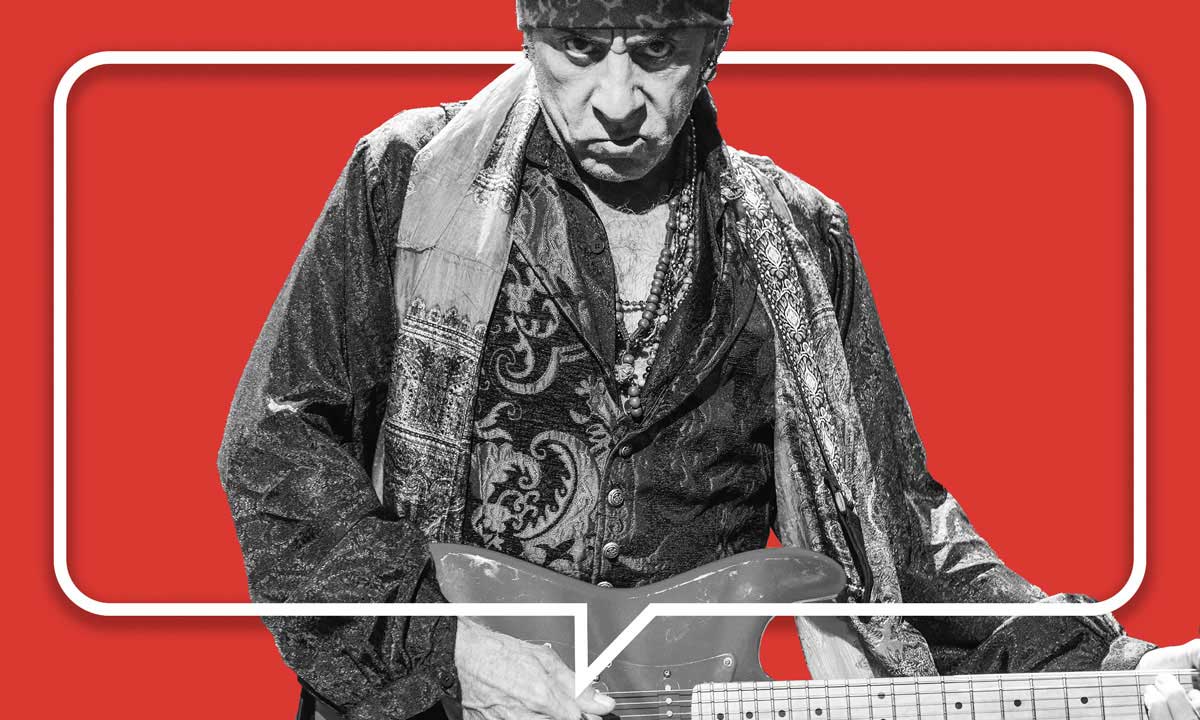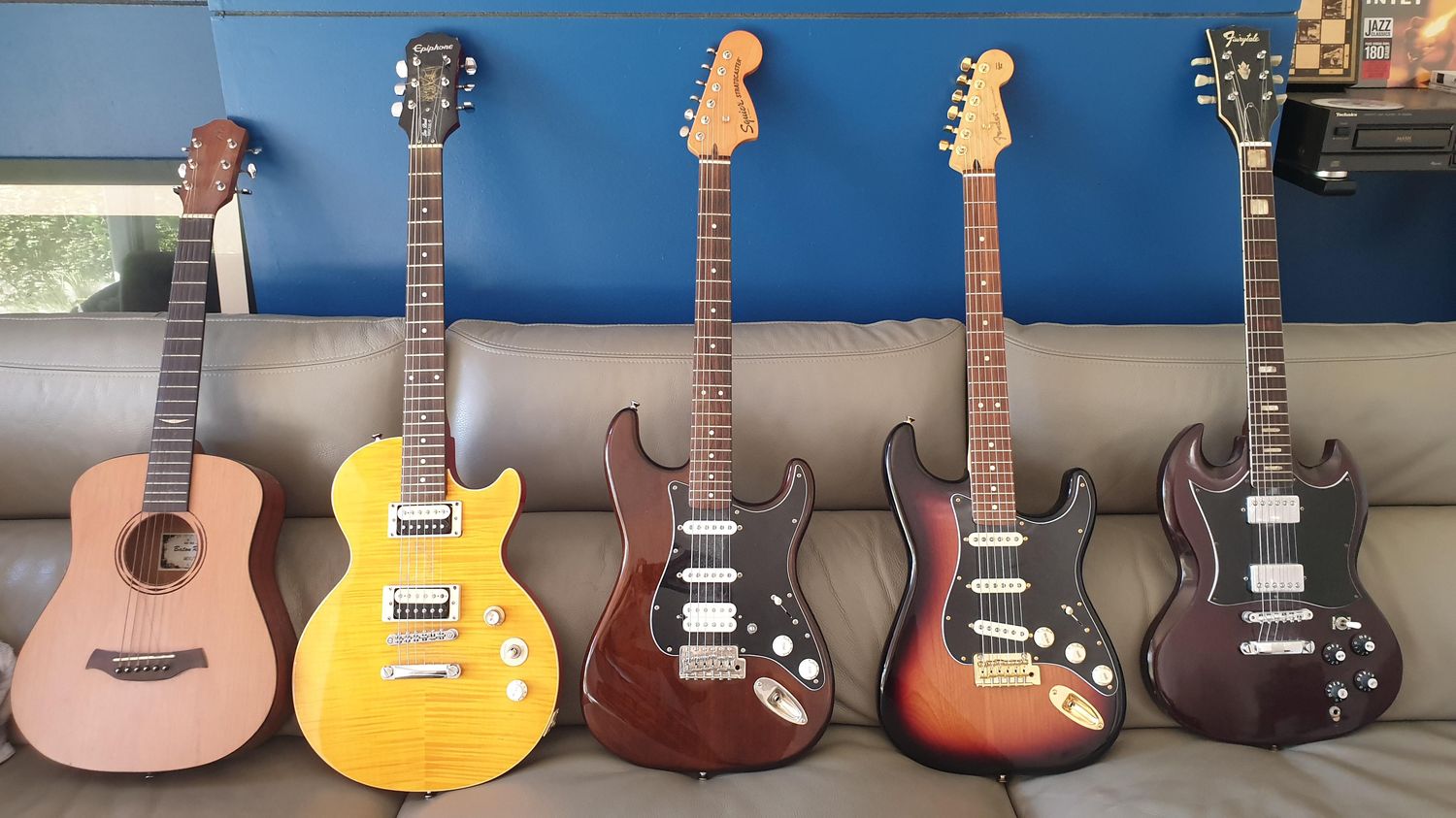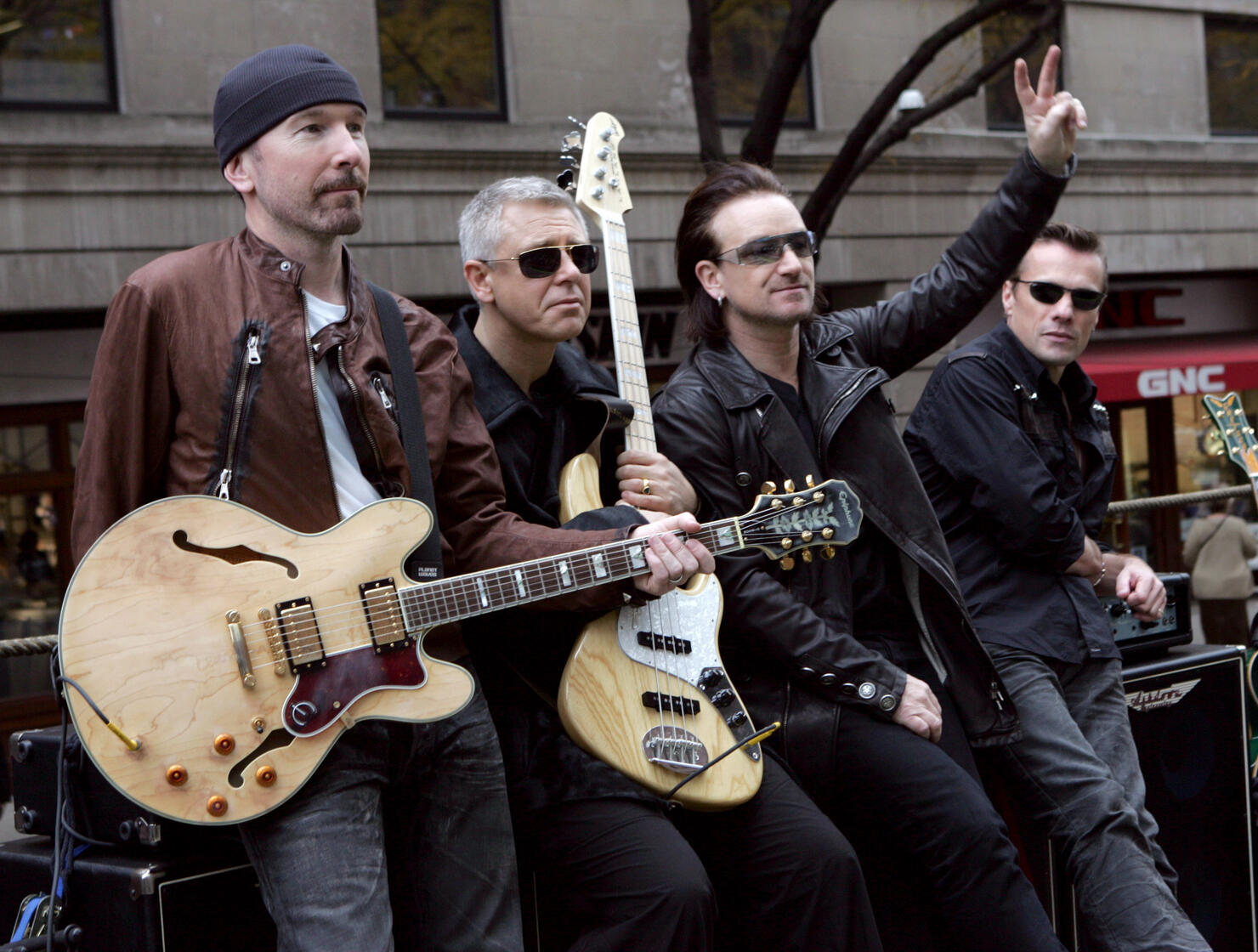Home>Events & Info>Note>What Happens If You Change The Type Of Music Note In A Song


Note
What Happens If You Change The Type Of Music Note In A Song
Modified: January 22, 2024
Curious about changing the type of music note in a song? Discover what happens when you alter notes and how it affects the overall melody and composition.
(Many of the links in this article redirect to a specific reviewed product. Your purchase of these products through affiliate links helps to generate commission for AudioLover.com, at no extra cost. Learn more)
Table of Contents
Introduction
In the world of music, notes are the building blocks that create melodies and harmonies, shaping the overall composition and evoking emotions within the listener. Each note carries its own distinct characteristics, including pitch, duration, and intensity. But what happens if you change the type of music note in a song? Does it significantly alter the musical experience?
The type of music note, whether it’s a whole note, half note, quarter note, or even more intricate variations, plays a crucial role in determining the rhythm, melody, and mood of a piece. By modifying the note type, musicians have the power to transform the entire composition, adding complexity, excitement, or creating a completely different ambiance.
In this article, we will explore the implications of changing music note types in a song. We will unravel how it affects the melody, harmony, rhythm, dynamics, overall mood, instrumentation, and the challenges musicians may encounter when embarking on such creative modifications.
Whether you’re a music enthusiast seeking to understand the intricacies of music composition or a musician looking to experiment with different notes, this article will provide fascinating insights into the world of music and the impact that altering note types can have on a song.
Understanding Music Notes
Before delving into the implications of changing music note types, let’s first establish a solid understanding of what music notes are. In sheet music, notes represent the pitch and duration of a sound. They are represented by symbols placed on the staff, each occupying a specific position and duration.
There are several types of music notes, including whole notes, half notes, quarter notes, eighth notes, and sixteenth notes, among others. Each note has a unique shape and duration, which determines how long it should be played.
For instance, a whole note is an open circle placed on the staff, indicating a sustained sound for four beats. A half note is a hollow circle, played for two beats. A quarter note is a filled-in circle, played for one beat. Eighth notes have flags attached to their stems and are played for half a beat each, while sixteenth notes have double flags and are played for a quarter beat each.
It’s important to note that note durations can be modified with the use of dots. A dot placed after a note extends its duration by half, and each additional dot adds half of the value of the previous dot. This allows for more dynamic and intricate rhythmic patterns.
Furthermore, notes also have a designated pitch. The pitch of a note is determined by its position on the staff. The higher a note is placed on the staff, the higher its pitch, and vice versa. This allows musicians to create melodies by combining different notes with varying pitches and durations.
Understanding the characteristics and roles of different music notes sets the foundation for comprehending the implications of changing their types. The way notes are structured and interpreted by musicians contributes to the overall composition and the emotional impact it has on the listener.
Implications of Changing Music Note Types
Changing the type of music note in a song can have significant implications for the composition as a whole. It can affect the melody, harmony, rhythm, dynamics, overall mood, and even the instrumentation of a piece. Let’s explore each of these aspects in more detail:
Melody:
The melody is the primary voice or line of a composition that carries the main musical theme. Changing the note types can modify the melody’s rhythm and timing, making it more intricate or rhythmically dynamic. For example, using shorter note durations like eighth notes or sixteenth notes can create a faster-paced and more energetic melody. Conversely, longer note durations like whole notes can lend a more sustained and contemplative feel to the melody.
Harmony:
Harmony refers to the simultaneous sounding of multiple notes to create chords and progressions. By altering the note types, the harmony can become more complex or simplified. Using shorter note durations in the chords can create a sense of movement and tension, while longer note durations can provide a smooth and flowing harmonic progression.
Rhythm:
The rhythm is the pattern of beats and accents in a piece of music. Changing the note types can dramatically shift the rhythmic flow. Incorporating syncopated rhythms with shorter note durations can add a sense of groove and syncopation, while longer note durations can create a steady and predictable pulse.
Dynamics:
Dynamics refer to the variations in volume and intensity within a musical performance. Altering note types can influence the dynamics by providing opportunities for dynamic contrasts. For example, using shorter note durations in a section can create a sense of tension and excitement, while longer note durations can bring a calming and soothing effect.
Overall Mood:
Changing music note types can have a profound impact on the overall mood of a composition. By modifying the note durations and rhythms, the emotional tone of the song can be altered. Shorter note types can evoke a sense of urgency or excitement, while longer note types can create a more relaxed and introspective mood.
Impact on Instrumentation:
Changing note types can also influence the choice of instruments and their role in the composition. Some instruments may be better suited for playing shorter note durations, while others may excel in sustaining longer notes. By adjusting the note types, musicians can optimize the instrumentation to achieve the desired sound.
Overall, changing the type of music note in a song opens up a world of possibilities for musicians to explore and experiment with their compositions. It allows for greater creativity and artistic expression, providing avenues for conveying different emotions and engaging the listener in unique ways.
Effects on Melody
The melody is the heart of a composition, carrying the main musical theme and capturing the listener’s attention. Changing the type of music note in a song can have profound effects on the melody, transforming its rhythm, timing, and overall feel.
Rhythm and Timing:
Altering the note types can add complexity, nuance, and dynamic variation to the melody’s rhythm and timing. For example, replacing longer note durations with shorter ones, such as eighth or sixteenth notes, can create a faster-paced and more energetic melody. This change can instill a sense of urgency or excitement in the music, propelling the listener forward with an upbeat and lively feel.
On the other hand, using longer note durations, such as whole notes, can produce a more sustained and contemplative melody. This slower tempo allows for a more introspective and emotional experience, creating a sense of space and reflection within the composition.
Articulation and Expression:
Music note types not only affect rhythm but also play a crucial role in determining articulation and expression in the melody. Shorter note durations, like eighth notes or sixteenth notes, lend themselves well to articulation techniques like staccato and legato, adding crispness or smoothness to the melody, respectively. These articulation choices can greatly impact the delivery and interpretation of the musical phrases.
Dynamic Emphasis:
Changing the note types can also provide opportunities for dynamic emphasis within the melody. By using a mix of shorter and longer note durations strategically, musicians can create dynamic contrasts. For example, incorporating a section with shorter note durations can inject a burst of energy and intensity into the melody. This shift in dynamics can heighten emotional impact and capture the listener’s attention.
Ultimately, the effects of changing music note types on the melody are diverse and powerful. The manipulation of note durations and rhythmic patterns can completely alter the mood, energy, and expression of a composition, breathing new life into the melody and engaging the listener in unexpected and captivating ways.
Effects on Harmony
Harmony is the combination of simultaneous notes that create chords and progressions in a composition. When the type of music note is changed, it can have a significant impact on the harmony, altering its complexity, texture, and overall character.
Complexity of Chords:
Changing note types can affect the complexity of the chords in a composition. Longer note durations, such as whole notes or half notes, allow for more sustained tones and harmonies. This can result in a richer and fuller sound, giving the chords a lush and harmonically dense quality.
On the other hand, incorporating shorter note durations, like quarter notes or eighth notes, can introduce more intricate and fast-paced chord changes. This adds a sense of movement and tension to the music, creating a dynamic and evolving harmonic landscape.
Texture and Layering:
Varying the note types can also impact the texture and layering of harmonies within a composition. Using shorter note durations in the chords can create a sense of rhythmic complexity and intricacy. This can be particularly effective in genres like jazz or funk, where intricate chord progressions and syncopated rhythms are prevalent.
Conversely, longer note durations can provide a smoother and more sustained harmonic texture. This can create a more relaxed and serene ambiance, allowing the listener to immerse themselves in the soothing flow of the harmonies.
Emotional Intensity:
The choice of note types in harmony can contribute to the emotional intensity of a composition. Shorter note durations can add a sense of urgency and intensity to the harmonic progression, while longer note durations can bring a calm and gentle quality. These variations in note types can evoke different emotional responses and create a diverse palette of feelings in the listener.
Voicing and Instrumentation:
Changing music note types can also impact the voicing and instrumentation within the harmony. Different instruments have limitations regarding the sustain and duration of notes. Adapting the note types to suit the capabilities of specific instruments can lead to more effective and cohesive harmonic arrangements.
In summary, altering the type of music note in a composition has significant implications for the harmony. It can influence the complexity, texture, emotional intensity, and overall character of the chords and progressions. By experimenting with different note types, musicians can create unique and compelling harmonic landscapes that enhance the musical experience.
Effects on Rhythm
Rhythm is the heartbeat of music, providing a sense of pulse and groove. Changing the type of music note in a song can have a profound impact on the rhythm, transforming its energy, groove, and overall feel.
Speed and Tempo:
Altering the note types can directly affect the speed and tempo of a composition. Using shorter note durations, such as eighth or sixteenth notes, increases the number of notes played within a given time frame, resulting in a faster-paced rhythm. This can inject a sense of urgency, excitement, and energy into the music, propelling the listener forward.
Conversely, longer note durations, like whole notes or half notes, slow down the rhythm, creating a more laid-back and relaxed tempo. This can introduce a sense of spaciousness and tranquility to the music, allowing the listener to savor each note as it unfolds.
Syncopation and Groove:
Changing note types can introduce syncopation and impact the groove of a composition. Syncopation is the emphasis on off-beat or unexpected rhythms, creating a sense of tension and interest in the music. By incorporating shorter note durations at unexpected moments, musicians can add syncopation to the rhythm, giving it a unique and captivating groove.
Furthermore, shorter note durations enable more intricate rhythmic patterns, allowing for grooves that are fast, complex, and intricate. This can be found particularly in genres such as jazz, funk, and Latin music, where syncopated rhythms and intricate grooves are prevalent.
Musical Phrasing and Expression:
The choice of note types influences the musical phrasing and expression within a composition. By incorporating a variety of note durations, musicians can create expressive and dynamic phrases that give the music a sense of ebb and flow. The length and placement of notes can contribute to the shaping and contouring of melodic and rhythmic lines, adding depth and emotion to the overall musical expression.
Danceability and Feel:
The type of music note used in a composition can greatly affect its danceability and feel. For example, using shorter note durations can create a more energetic and danceable rhythm, encouraging the listener to move and groove to the music. On the other hand, longer note durations may evoke a more introspective or contemplative feel, inviting the listener to sway or reflect along with the rhythm.
In summary, changing the type of music note in a song can profoundly impact the rhythm. It can alter the speed, tempo, syncopation, groove, musical phrasing, and danceability of the composition. By experimenting with different note types, musicians can shape the rhythm to create unique and captivating musical experiences.
Effects on Dynamics
Dynamics play a crucial role in music, adding depth, contrast, and emotion to a composition. Changing the type of music note in a song can have significant effects on the dynamics, influencing the volume and intensity of the music.
Dynamic Contrast:
Altering note types can create opportunities for dynamic contrast within a composition. By utilizing a mix of shorter and longer note durations, musicians can introduce dynamic shifts and variations in volume. Using shorter note durations in a section can create a sense of intensity and excitement, while longer note durations can bring about a more serene and subdued atmosphere.
These dynamic contrasts add dimension and drama to the music, capturing the listener’s attention and inviting them on an emotional journey through varying levels of intensity.
Articulation and Attack:
Note types can also affect how a musician articulates or attacks each note. Shorter note durations, such as eighth notes or sixteenth notes, often require a sharper and more defined attack. This can create a more percussive and precise sound, adding a sense of clarity and precision to the dynamics.
Conversely, longer note durations provide the opportunity for a softer and more legato approach. This can create a smoother and more sustained sound, allowing for a gentle and flowing dynamic expression.
Gradual Dynamic Shifts:
Changing note types can facilitate gradual dynamic shifts within a composition. For example, starting with longer note durations and gradually transitioning to shorter note durations can create a sense of building intensity. This gradual shift in dynamics can add a layer of anticipation and suspense to the music, creating moments of tension and release.
Expressiveness and Emotional Impact:
The choice of note types in different sections of a composition can greatly impact its expressiveness and emotional impact. Using shorter note durations in a climactic section can intensify the emotions being conveyed, while longer note durations in a softer section can evoke a sense of tranquility and introspection.
Dynamics, influenced by the type of music note, contribute to the overall narrative of a composition, guiding the listener through a range of emotions and intensities. They allow musicians to shape the music’s dynamics and make deliberate choices that enhance the overall impact of the piece.
In summary, changing the type of music note in a song affects the dynamics, offering opportunities for dynamic contrast, articulation, and gradual shifts in intensity. By skillfully manipulating note types, musicians can create a dynamic palette that engages the listener and adds depth and emotion to the music.
Effects on Overall Mood
The type of music note used in a song has a profound effect on the overall mood and emotional impact of the composition. By altering the note types, musicians have the power to evoke different emotions and create diverse atmospheres within their music.
Energetic and Upbeat:
Using shorter note durations, such as eighth notes or sixteenth notes, can create a fast-paced and energetic mood. The rapid succession of notes adds a sense of excitement, urgency, and liveliness to the music, making it feel vibrant and dynamic. This type of rhythm can be found in genres like pop, rock, and dance music, where high energy and movement are key elements.
Melancholic and Reflective:
On the other hand, longer note durations, such as whole notes or half notes, lend themselves to a more contemplative and introspective mood. The sustained tones of these notes create a sense of spaciousness and allow the listener to immerse themselves in the emotions conveyed by the music. This type of rhythm is often used in ballads, classical compositions, and ambient music, where a deeper emotional connection is desired.
Tension and Anticipation:
Changing the note types can also create tension and anticipation within a composition. By incorporating shorter note durations in specific sections, musicians can add a sense of urgency and heightened anticipation. This rhythmic tension serves to keep the listener engaged and eager for the resolution that will follow, creating a stimulating and suspenseful mood.
Relaxing and Calming:
Longer note durations can promote a relaxing and calming mood within the music. Their extended sustain allows for a more leisurely pace, giving the listener a sense of serenity and tranquility. This type of rhythm is often associated with genres like ambient, new age, and smooth jazz, where a soothing and peaceful atmosphere is desired.
Playfulness and Quirkiness:
Using varied note types, including syncopated rhythms and irregular patterns, can evoke a playful and quirky mood. The unexpected and off-beat accents created by these rhythms bring a sense of whimsy and curiosity to the music, inviting the listener to engage with its unique and unconventional character. This type of rhythm can be found in genres like jazz, funk, and experimental music.
In summary, the choice of note types in a composition significantly influences the overall mood and emotional impact of the music. Whether it’s creating an energetic and upbeat atmosphere, evoking reflection and melancholy, building tension and anticipation, promoting relaxation and calmness, or expressing playfulness and quirkiness, musicians can leverage note types to shape the mood and create a powerful emotional connection with their listeners.
Impact on Instrumentation
Changing the type of music note in a song can have a significant impact on the choice of instruments and their role in the composition. Different note types may work better with certain instruments, and this consideration can greatly influence the overall sound and effectiveness of the instrumentation.
Suitability of Instruments:
Each instrument has its own unique characteristics and limitations, including the duration and sustain of the notes it can produce. When altering note types, it is important to consider the suitability of instruments to effectively execute the desired musical ideas.
For example, instruments with a long sustain, such as string instruments or pipe organs, may be better suited for playing longer note durations like whole notes or half notes. Their ability to produce and sustain these tones allows for a rich, resonant sound that complements the extended duration of the notes.
On the other hand, instruments with percussive qualities, such as drums or xylophones, may excel in playing shorter note durations like eighth notes or sixteenth notes. Their ability to produce quick, distinct sounds allows for the crisp articulation and precision needed for these rhythmic patterns.
Texture and Layering:
Altering the note types can also impact the texture and layering of the instrumentation within a composition. Specific note durations may work better when creating certain textures or layers of sound.
For example, using shorter note durations can contribute to a more intricate and complex texture, especially when combined with other instruments playing similar rhythmic patterns. This adds a sense of depth and complexity to the overall sound, allowing each instrument to contribute to the overall texture in a distinctive way.
Conversely, longer note durations can provide a smoother and more sustained texture, particularly when played by instruments with a longer sustain. By employing these longer notes, musicians can create a more legato and flowing sound that allows for a seamless blending of the instrumentation.
Creating Contrast:
Changing note types can also be employed to create contrast within the instrumentation. By utilizing a mix of shorter and longer note durations across different instruments, musicians can create a dynamic interplay and contrast in their compositions. This contrast adds variety and interest to the overall sound, capturing the listener’s attention and enhancing the musical experience.
Expressing Musical Ideas:
The choice of note types can also aid in expressing specific musical ideas or emotions. For example, longer note durations can convey a sense of serenity or introspection, while shorter note durations can create a more lively and energetic mood.
By carefully selecting note types that align with the intended musical expression, musicians can effectively communicate their creative vision through the instrumentation. This ensures that the chosen instruments and their execution are in harmony with the overall composition.
In summary, changing the type of music note in a song impacts the choice of instruments and their role in the composition. By considering the suitability of instruments, utilizing different note durations to create diverse textures and layering, creating contrast within the instrumentation, and aligning note types with musical ideas, musicians can enhance the overall sound and effectiveness of their chosen instrumentation.
Challenges in Changing Music Note Types
While changing the type of music note in a composition can open up new creative possibilities, it also brings its fair share of challenges. Musicians may encounter various difficulties when altering note types and incorporating them into their compositions.
Technical Execution:
Changing note types often requires musicians to adapt their technical skills and abilities. Different note durations require different fingerings, bowings, or techniques, depending on the instrument being played. Switching between note types seamlessly and accurately can be a demanding task that requires practice and precision.
Ensuring clean and precise execution of rapid passages or intricate rhythmic patterns, especially with shorter note durations, can be challenging. It requires musicians to develop dexterity and coordination to accurately perform the desired rhythms and execute the transitions smoothly.
Maintaining Musicality and Phrasing:
When altering note types, musicians must ensure that the musicality and phrasing of the composition are maintained. It is essential to achieve a balance between the technical demands of playing different note durations and the expressive qualities of the music.
Musicians must pay attention to articulation, dynamics, and nuances to maintain a cohesive musical flow and convey the intended emotions. Improper execution of note types can result in an uneven or disjointed performance, diminishing the overall musical impact.
Syncing with Other Instruments:
Changing note types can also present challenges in synchronizing with other musicians in an ensemble or band. It is crucial to maintain a tight rhythmic cohesion and ensure that the transitions between note types align harmoniously with the rest of the ensemble.
Musicians must listen attentively to each other and rehearse together to achieve a unified and synchronized performance. Proper communication and coordination are necessary to navigate the complexities of changing note types collectively and create a cohesive musical experience.
Adapting to Musical Style and Genre:
Changing note types may require musicians to adapt to the specific style and genre of the composition. Different musical genres have their own distinct rhythmic patterns and expectations regarding note types.
For example, transitioning from playing longer note durations in one genre to playing syncopated rhythms with shorter note durations in another genre requires a shift in musical approach. Musicians must familiarize themselves with the stylistic nuances of different genres and adapt their playing accordingly.
Overall, overcoming these challenges requires dedication, practice, and a deep understanding of the musical elements involved. By honing technical skills, maintaining musicality and phrasing, synchronizing with other musicians, and adapting to different musical styles, musicians can successfully navigate the complexities of changing note types and create captivating compositions.
Conclusion
Changing the type of music note in a song has far-reaching implications for the composition. It influences the melody, harmony, rhythm, dynamics, overall mood, and even the instrumentation. By modifying note types, musicians have the power to shape the music and evoke specific emotions within the listener.
Understanding different note durations and their effects is crucial in utilizing them effectively. Shorter note durations, such as eighth notes or sixteenth notes, can create a fast-paced and energetic feel, while longer note durations, like whole notes or half notes, bring a more relaxed and contemplative mood to the music.
The choice of note types impacts the melody’s rhythm, timing, and expressiveness, as well as the complexity and texture of the harmony. It determines the speed, groove, and overall feel of the rhythm, while influencing the dynamics and emotional intensity of the composition.
The type of music note also influences instrument choice and the effectiveness of different instruments within the composition. It can create contrast, layering, and unique textures, allowing each instrument to contribute to the overall sound.
While changing note types presents challenges, such as technical execution, maintaining musicality, syncing with other musicians, and adapting to different musical styles, these obstacles can be overcome through practice, coordination, and a deep understanding of the musical elements involved.
In conclusion, the ability to change the type of music note in a song is a powerful tool for musicians. By exploring the implications of different note types and embracing the challenges they bring, musicians can create captivating and expressive compositions that engage and move listeners in profound ways.











